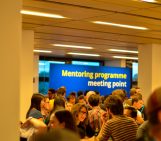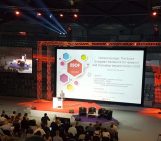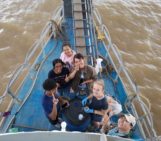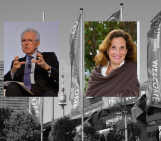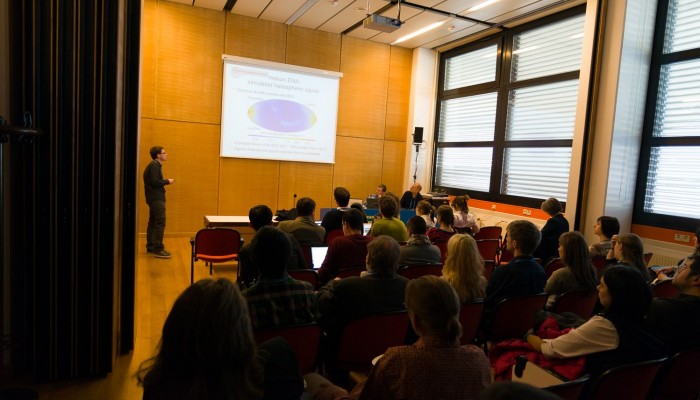
This year’s General Assembly saw more Short Courses than ever before! With many of the 50 courses on offer having been organised by and/or for early career scientitst, there was no excuse not to pick up some new skills. In this guest blog post, Jone Peter Reistad a PhD candidate at the University of Bergen, outlines the details of a session which explored what the future might hold for research in the Solar- Terrestrial sciences. With active discussion between established and early career scietists this course was no doubt a hit.
During the General Assembly a new short course took place: Meet the Experts – The Future of Solar-Terrestrial Research. In this session, three senior scientists as well as two Early Career Scientists (ECS) were invited to talk about their visions for the future of the Solar-Terrestrial sciences. They were given the difficult task of identifying important challenges within their field of expertise that the present young scientists need to address in the future.
The speakers came from the different communities within the solar-terrestrial division. This included the solar-, heliospheric-, and the near Earth space communities. They all did an outstanding job in pointing out challenges and knowledge gaps within their field.
Starting at the Sun, Louise Harra, Professor of solar physics at University College London, pointed out how much more we know today due to all the recent solar missions. She assured us that more is definitely to come, as new missions are already in the pipe-line, and encouraged the young scientists to get involved in these future missions at an early stage. She had lots of ideas of what to look for with more precise instruments, and pointed out that a key to understand the evolution of the structures observed at the surface of the Sun is to be able to model the evolution of the structures below the surface using helioseismology.
From the Heliospheric community, emphasis was put on the more recent ability to track evolution of hot gases all the way from the Sun to the Earth. Alexis Rouillard, researcher at the French National Centre for Scientific Research, told us that the recent satellite missions had contributed to strengthen the bonds between the Solar and Heliospheric communities so that the two now uses a more common terminology. This was a tendency he very much hoped to see continuing into the future.
The crucial link to Space Weather applications is the ability to predict the orientation of the magnetic field originating from the Sun when it reaches the Earth. This is by far the most uncertain factor in modeling the geomagnetic impact of a solar storm. Rouillard discussed how having a satellite closer to the Sun could possibility enhance our understanding of this propagation and hence revolutionise space weather predictions in the future.
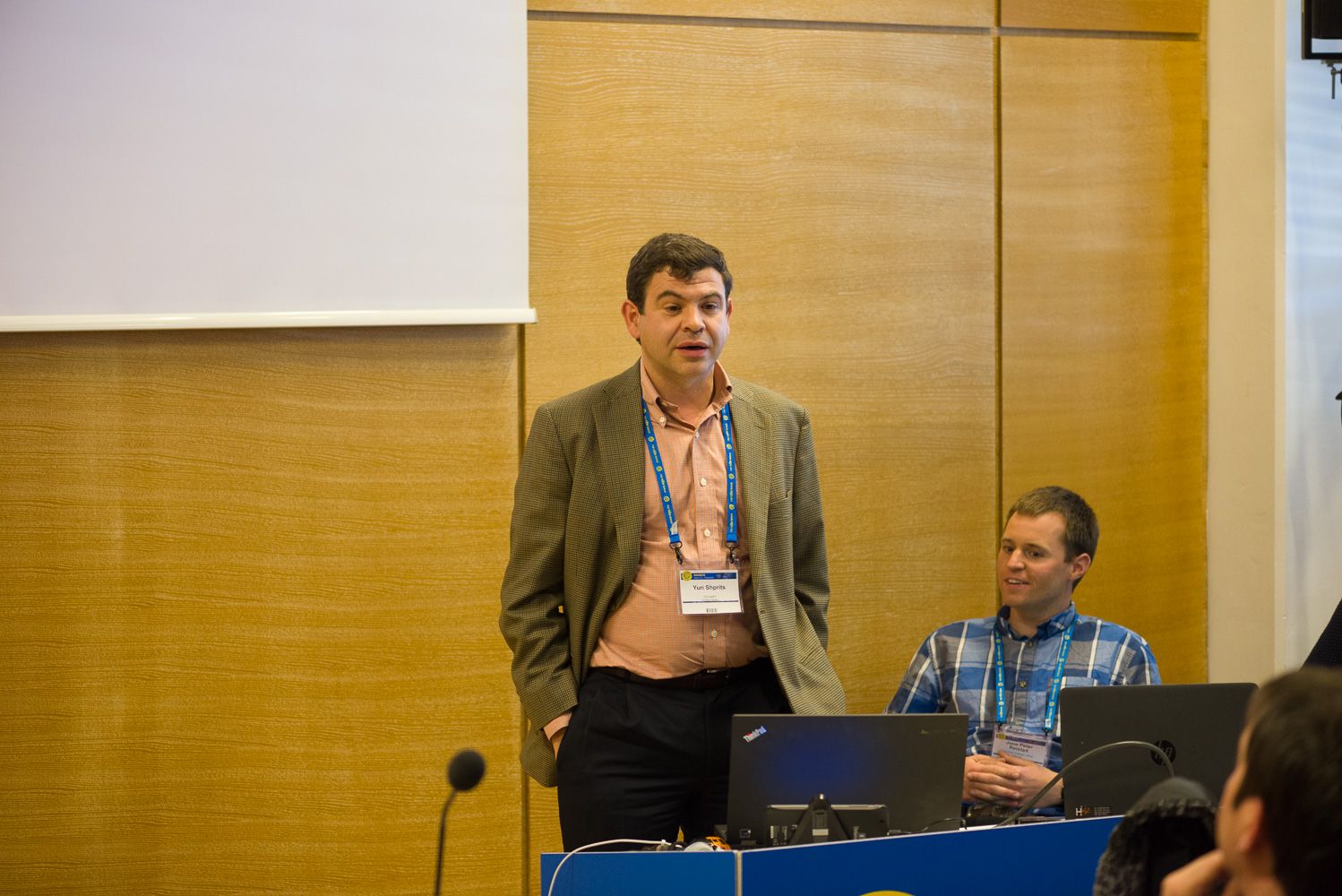
Yuri Shprits, speaking at the session about the future of solar-terrestrial research. (Credit: Christer van der Meeren, Birkeland Centre for Space Science, University of Bergen)
Space Weather – the impact on the near Earth space from the outside – was also discussed from a more Earth-centered perspective. Communication through space-based instrumentation becomes increasingly important as more and more infrastructure is becoming dependent on satellite communications. A detailed knowledge of the mechanisms that influence our communications are therefore more important now than ever. Yuri Shprits, researcher at MIT and UCLA, emphasized that the Earths radiation belts is a key region, and that there are still open questions regarding their buildup and loss mechanisms.
This short course was a result of feedback from last years survey among Early Career Scientists in EGU. The short courses at EGU was highlighted as one of the most important activities that was directly targeting the ECS’s. As each division in EGU has their own ECS representative, you can influence the division specific activities for young scientists by contacting your respective ECS representative. Visit https://www.egu.eu/young-scientists/ for more information about the Early Career Scientist activity within the EGU.
By Jone Peter Reistad, PhD Candiadte at the University of Bergen.

